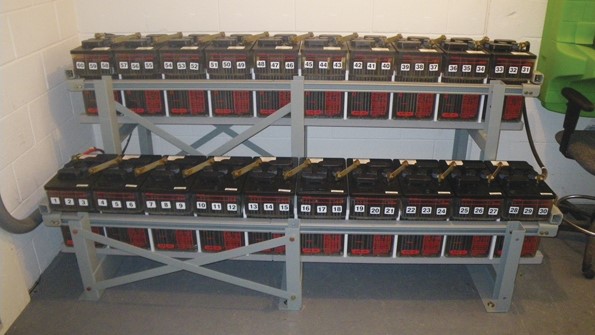Share this
The little things that make a big impact to your UPS batteries
by PowerShield on Aug 15, 2018 11:37:24 AM
Why attention to detail makes a big difference to getting the most out of your UPS battery investment.
The global data center business is huge and growing fast, driven by the rapid digitisation of every type of business across almost every nation on earth. Within this scale and growth is the stark reality understood by data center operators – it is a game of small margins.
Two facets in particular, installation and commissioning and ongoing monitoring, are key to staying across all the small things that make a difference. The challenge for data center operators is that batteries are a long-term investment during which seemingly insignificant issues can have a material effect on battery life, backup reliability and even facility safety.
Installation and commissioning
Paying attention to the details starts from the moment a new battery arrives, as careless practice can lead to battery damage. An extreme example is a battery being dropped or mishandled, causing a hairline crack that may not even be noticed. This could be installed at the top or back of a rack, where it is hard to reach and sight, slowly leak and ultimately put the battery into thermal runaway and the risk of fire.
At the other end of the scale are simple installation mistakes that can compromise the conductivity of the battery bank. For example, a torque wrench is used for installation at battery manufacturers’ settings to ensure the correct amount of force is used so that a proper connection is made. Failure to do so may cause a high resistance connection causing a hot spot under discharge.
Manufacturer’s instructions provide detailed instructions about charging the battery correctly to bring it into service. This includes recommended processes for charging the battery when being installed.
Procedures like a discharge test (also known as a load test or capacity test, which accurately measures the true capacity of a battery system and in turn determines the health of its batteries) are crucial. The discharge test, as part of the commissioning tests for batteries, is one key check that often gets overlooked because it is time consuming and expensive.
Small installation and commissioning errors can have large impacts on your UPS battery investment over time, as well as increasing the risk of a failure in backup power during an outage. Equally important to paying attention to the small things at the start, is monitoring batteries over time.
Management and monitoring - Managing the risk
How do you reduce the risk of these small things impacting your UPS battery investment? Managing a data center is a complex operational challenge, and batteries represent a relatively small element. Applying some technology in the form of a battery monitoring system is one way to effectively manage all of the components required to extract maximum performance from your batteries.
Battery monitoring works by connecting sensors to each battery, and each string of batteries, that continuously collect data such as individual voltage, impedance and temperature. Software gathers and analyses this data, providing the insights you need to make management decisions about your batteries health and performance.
By implementing monitoring right from the installation phase, data center operators get a clear view of any risks to battery performance. For ongoing management, it provides the ability to identify faults and weaknesses in the battery bank early so preventative maintenance and replacement can be done in a safe and orderly way. You can also ensure the battery bank is maintained in an environment most likely to maximise performance and life. Ultimately monitoring provides you with confidence there is sufficient battery capacity to maintain systems in the event of a power failure.
Battery management – it’s what we do
To be a data center operator is to be a jack-of-all trades, having to monitor and manage a complex mix of technologies and services to achieve high availability standards. At PowerShield, we understand battery management intimately, so you don’t have to. We’d welcome any questions or comments you have about getting more out of your UPS battery investment.
For a more in-depth discussion around battery management systems and how PowerShield can help improve clarity in your data center, download our insights paper All the small things.
Share this
You May Also Like
These Related Stories

Are you one of the 80% that needs 99.99%?

Battery Cabinets vs. Battery Racks

Protect your company's (and your own) reputation by getting the most out of your BMS
- September 2024 (1)
- December 2021 (2)
- March 2020 (1)
- January 2020 (1)
- December 2019 (1)
- October 2019 (2)
- July 2019 (1)
- May 2019 (2)
- April 2019 (1)
- March 2019 (2)
- January 2019 (1)
- December 2018 (1)
- November 2018 (1)
- August 2018 (3)
- July 2018 (1)
- June 2018 (2)
- May 2018 (2)
- March 2018 (2)
- February 2018 (2)
- January 2018 (1)
- November 2017 (1)
- October 2017 (1)
- August 2017 (3)
- June 2017 (1)
- March 2017 (1)
- November 2016 (1)
- October 2016 (1)
- September 2016 (2)